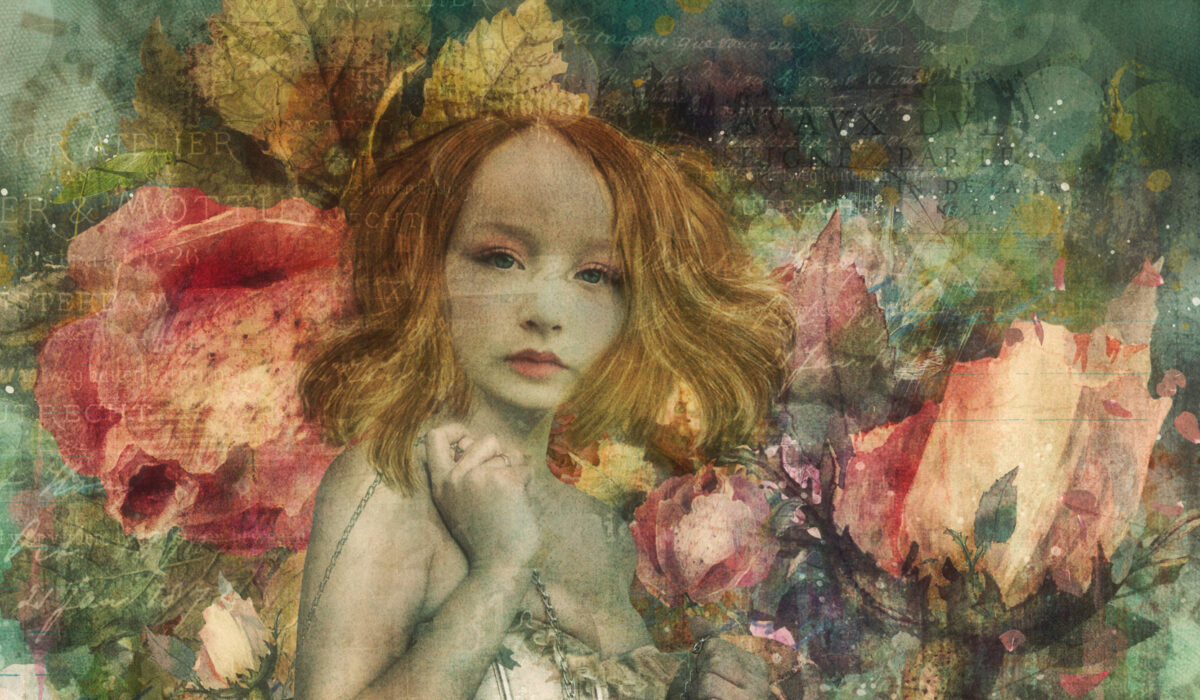— The featured artist of the 85th issue of Living the Photo Artistic Life magazine is UK-based AWAKE artist Pamela Walder. It’s wonderful being able to interview Pam here on Quill and Camera …
Q: What is your artistic background?
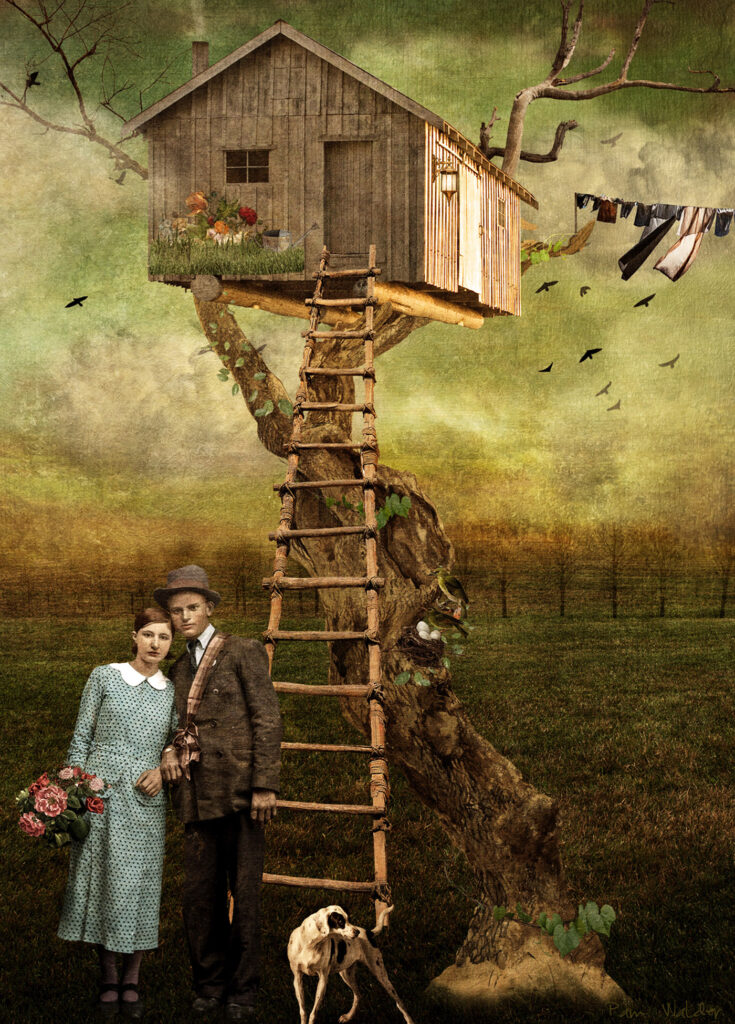
As a child, I was happiest colouring with crayons. I studied Art at O’ Level but was not encouraged to study it in the sixth form as it was not considered to be an academic subject. So that was that. I went off to university to study English and I became a teacher. For the next 30 years, I led my department and then managed university applications.
But in 2015, I had a sudden urge to get my crayons back.
I started making birthday cards for friends and family and then decided sell cards to staff at work. Valentine’s Day was so popular, I went on to make cards for Mother’s Day and got an abundance of orders for Christmas … It was then I discovered digital kits and bought Photoshop Elements and the Dummies’ Guide. My work was simple, quirky, humorous, but it was giving me so much pleasure. As Neil Gaiman said, ‘The world always seems brighter when you’ve just made something that wasn’t there before.’ And I felt that in my creative work.
Everything changed during the first lockdown in 2020: I joined the Mischief Circus group on Facebook and met ‘proper’ digital artists who used layers and textures. I wanted to find out how they did it so I started by working through various tutorials on YouTube; I kept learning and posting in the group and I must have improved because two designers invited me to be on their creative teams. My first response was excitement. My second was panic: I had no proper training.
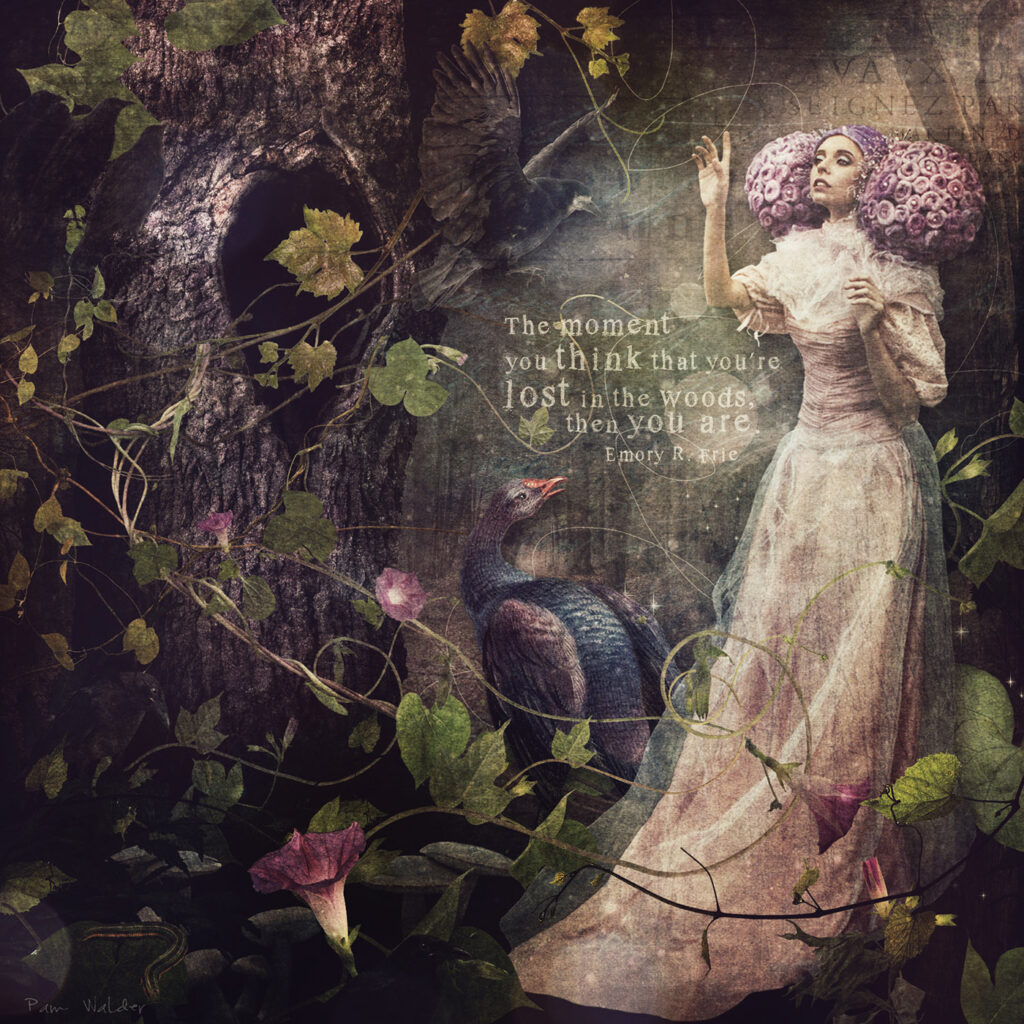
Then in January 2021, I discovered Photoshop Artistry and everything changed again. I actually wrote in my diary, ‘I’m going to learn how to be a serious digital artist’! This course was exactly what I needed: tutorial videos that taught me all about tools and techniques as well as how to ‘see’ the world as an artist.
It wasn’t just the content but the way in which it was taught that made it just right for me: I was led step by step along the way and everything was explained with clarity, precision and expertise, pushing me a bit further each session. Early on, I learned to name my layers precisely and to work non-destructively.
I went on to the AWAKE course which has also been an incredibly transformative experience, elevating my approach to my work and opening my eyes in so many ways. It is truly inspirational to explore how great photo-artists around the world create their art; it has taught me to find out what brings me joy and excitement as an artist and to create the best work I can. Thoreau said, ‘Go confidently in the direction of your dreams! Live the life you’ve imagined’, and I think I’m doing that now with my eyes wide open.
Q: What inspires you nowadays?
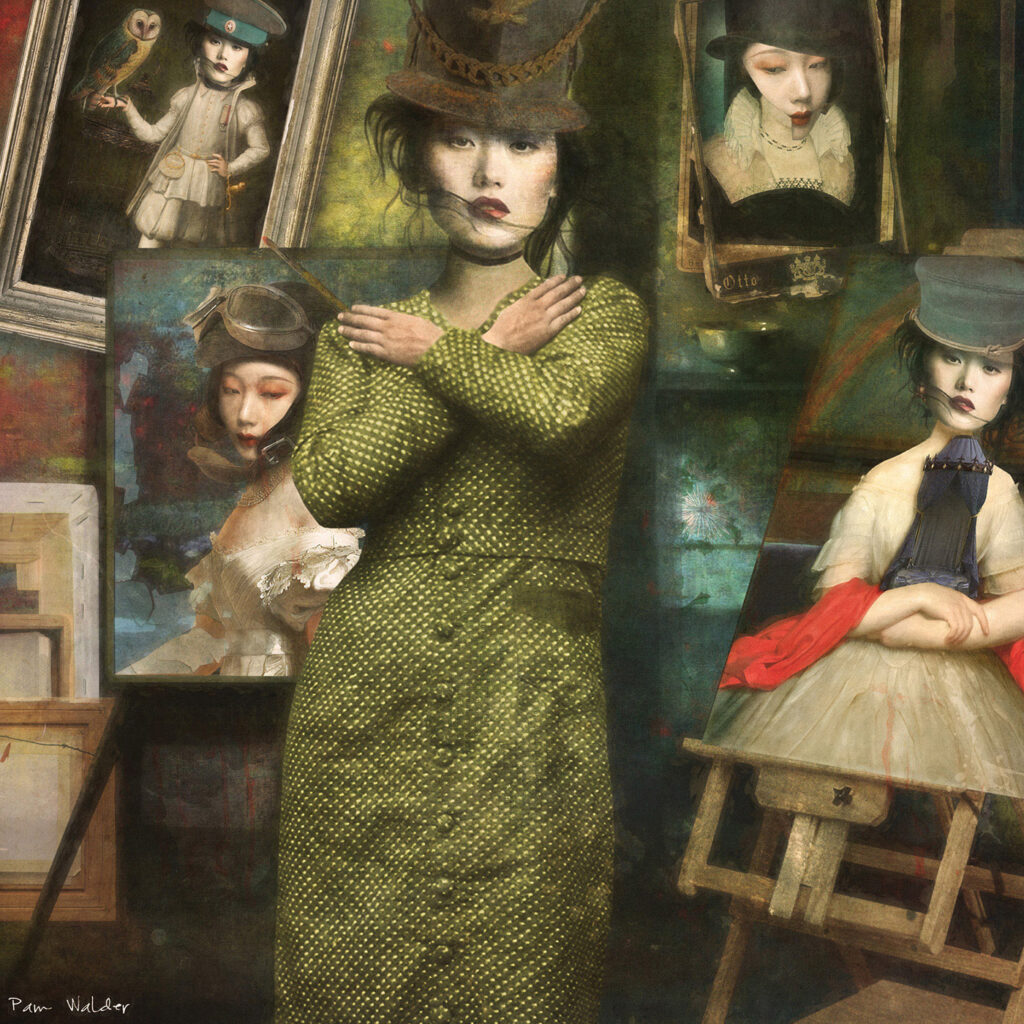
I love the contemporary work of Maggie Taylor, but I find daily inspiration in the work in so many of the artists in AWAKE. Every morning starts with looking at breathtaking beauty and creativity. My inspiration also comes from poetry, stories, films, song lyrics, art galleries, the news, old photographs … But it might also be a chess piece, a suitcase, a piece of string …
Sometimes I have an idea or quotation in mind from the outset but sometimes a composition evolves intuitively and takes off in twists and turns, rushing off in a new direction, on an adventure of its own.
It’s like doing a magic trick and you pull a rabbit out of the hat – but where you’re as surprised as anyone, because it’s a rabbit you didn’t put in there!
I love creating individual pieces but I also like getting absorbed in a project. I adore Mary Bailey’s soulful characters [‘We can plant a house. We can build a tree’] and I found out that some of them came from the vintage photographs of Costica Acsinte on Flickr. These black and white photographs have become a constant source of inspiration for me: I extract the character or characters, colour them and put them in a new world. This is how I created ‘And the daisies danced carefree from her yellow dress.’ [Then I recently discovered that Australian artist Jane Long had done this sort of thing back in 2015. So much for thinking I was being original!]
Q: What do I want your art to convey?
I like my compositions to convey a story – maybe that’s the English teacher in me. I often use typography and a quotation and I always give a piece a title. But poems and stories are open to the reader’s interpretation – the same with art. What I might mean and what you take from it can be two quite different things.
Q: How would you describe your approach?
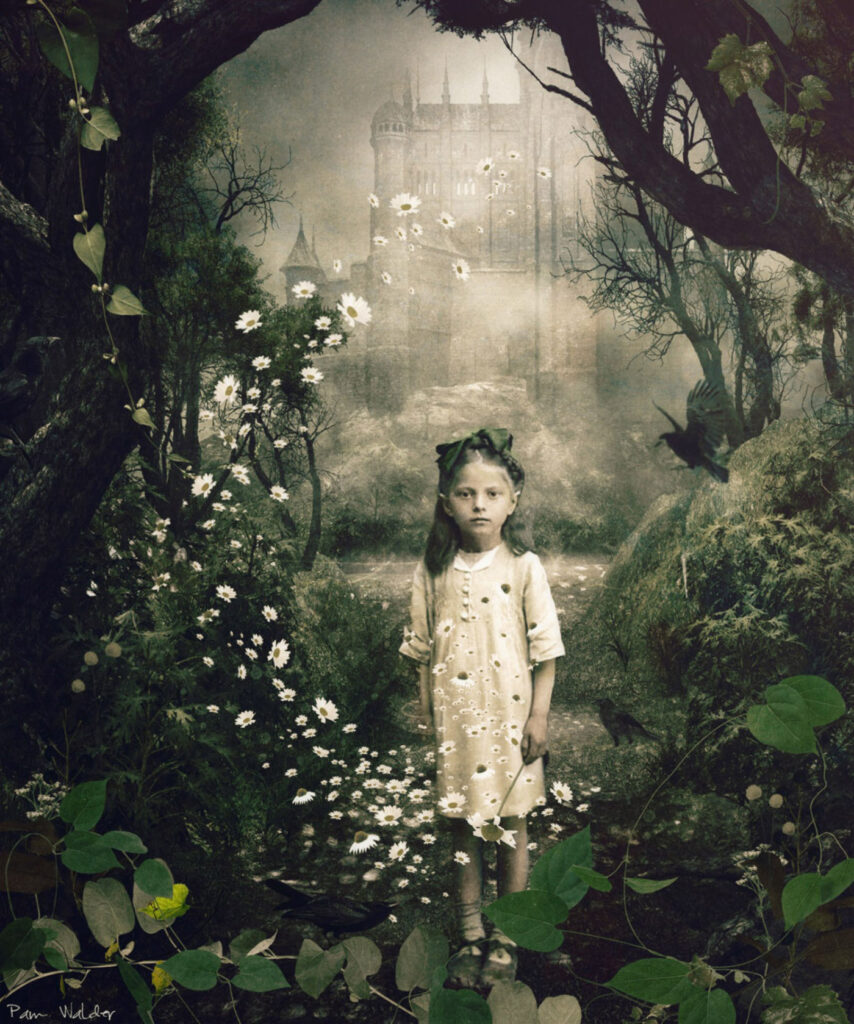
When I create art, I can be gone from the real world for hours. [Just ask my husband!] I feel that I am prolific, but I work slowly, obsessively, and a piece may take days or weeks to complete. I keep coming back to it every day . . . and this is when it might take on its own life and develop in ways I had not originally planned.
On the canvas itself, I usually begin with a model and a background. Then I add layers to the background and elements to help convey the story. At this point I might pause if it’s not working for me or I’ll carry on all day if it is, layering, blending, adding textures and other elements, trying some new technique I’ve learned . . . I also hit ‘undo’ quite a lot!
If I pause, I come back the next day and revisit what I created. Seeing it afresh often clinches the deal: yes, carry on with it . . . or pause again if I’m just not excited about it yet. I have many folders of ‘paused’ art that I return to.
If I do carry on with a piece all day, I might come back to it over the next few days to work on more layers of content, spatters, scribbles, paint effects, grunge brushes, special effects and overlays . . . but I frequently I find myself deleting if I think I’m cluttering up a piece. It’s a matter of balance, and less can be more.
Eventually I start work on post-production layers. These are what really make the finished piece, so I spend quite a lot of time experimenting here with textures and adjustment layers to finesse the tonality.
Q: Do you have a visual end product in mind at the start?
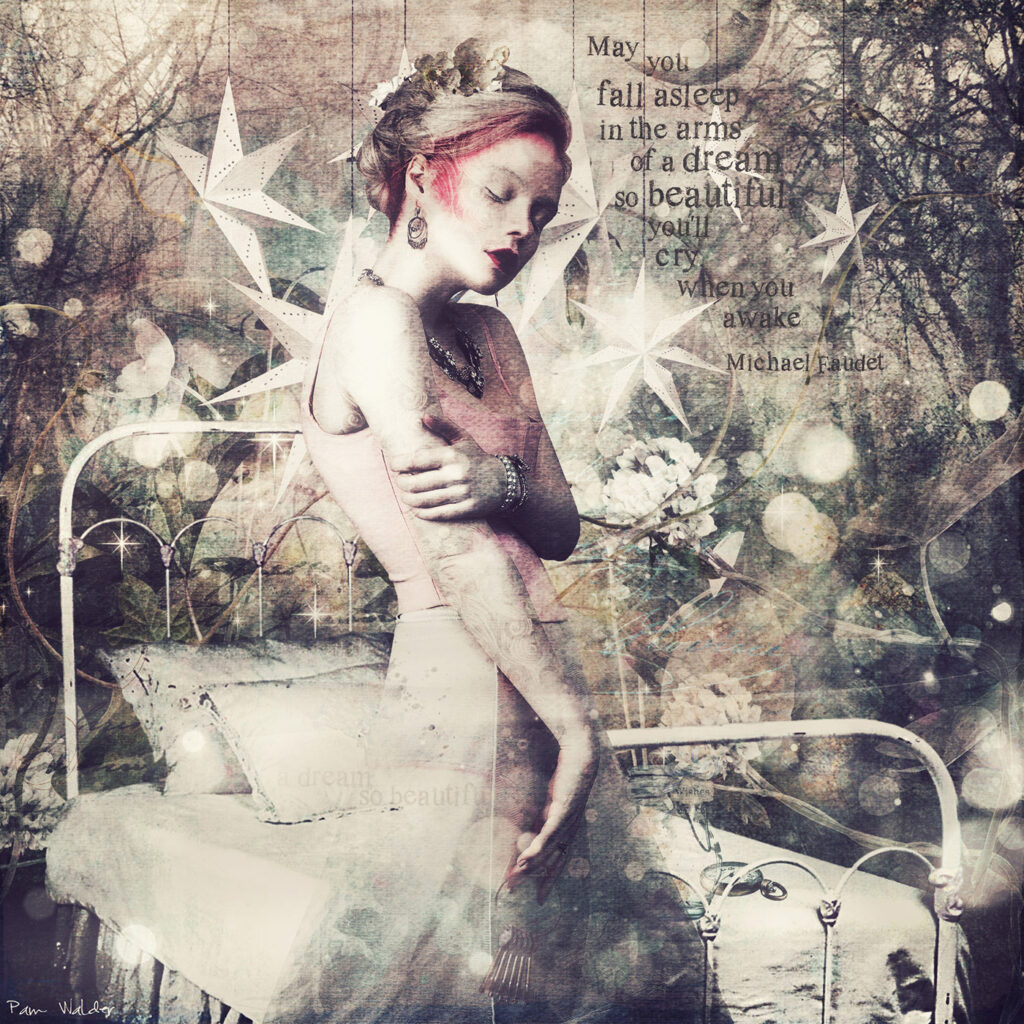
Never. I figure out where it’s going while I work and sometimes the composition seems to find me rather than me creating the composition.
My piece ‘May you fall asleep in the arms of a dream’ started life as a composition called ‘The Sleep Fairy’. I changed the model and added the quotation at quite a late stage and suddenly I knew I had something better.
As you might imagine, this involved going back quite a few layers to rework what I’d done, but that was fine: it had become exciting again.
Q: Do you ever get stuck or run into a creative block?
There will be times when you feel at a loss for inspiration – yes, this happens to everyone. But take Sebastian’s advice: ‘Your job is to sit down each day and START. It is the act of creating that produces the inspiration.’ Just take a few elements, images, a model, and play with layers, blends, textures, techniques . . . A story or idea may or may not develop. You may carry on with it all day or you may put it in your ‘paused’ folder . . . The important thing is to just have fun!
Q: What are you most proud of in your artistic life so far?
The last two years have changed my life. I decided to take early retirement and I now spend all my time learning more about digital artistry and creating art. I never imagined that I could or would be producing what I do now. I am proud to have my work published in Living the Photo Artistic Life magazine, and being chosen as a featured artist and having my composition on the March cover was a hugely exciting surprise and an honour.
Q: Do you have any tips for other artists?
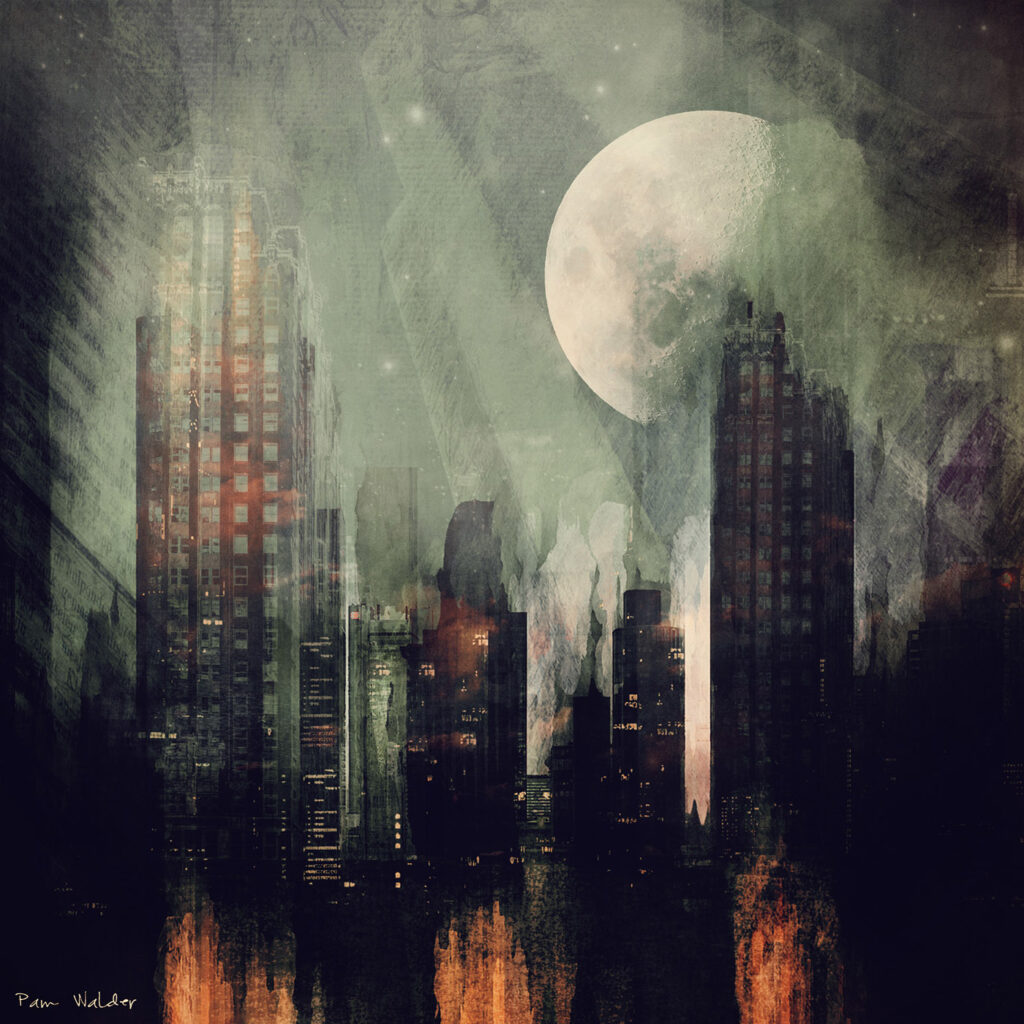
Practice! Practice! Practice! Which is to say, make time for your art. It requires your dedication and hard work.
And if you’re taking the Photoshop Artistry course, be a conscientious student and take notes. You might also want to keep journals of ideas and quotations, as well as folders of inspiring art to browse through whenever you need a boost.
If you’re nervous about posting your artwork, just be brave and do it without worrying what others will or won’t say. This was my big fear early on, as I was convinced everyone else was better than me. But you just have to put it out there. Get inspired, believe in yourself, and create what brings you happiness. Then share it.
And be daring. Experiment. Challenge yourself with new techniques and styles, because creating the same type of art all the time won’t necessarily help you grow as an artist.
Study more artwork — in books and online — and get inspired by the artwork in the magazine each month: linger over what captures your attention and interest, and see if you can explore the story it might be telling. Sit a while with the images and styles you like best [as well as those you don’t like] and pause to consider why that is.
Q: Where do you go from here?
Well, as Bill Watterson’s Calvin says: ‘It’s a magical world, Hobbes, ol’ buddy . . . Let’s go exploring!’
I’ve upgraded to the latest version of Photoshop, so I am currently working rather more slowly while I unlearn and relearn all the tools I’d mastered in Elements as well as getting the hang of new ones. So in a sense, I really am still taking my first steps as a digital artist . . . But that’s how it always is. Being ‘AWAKE’ is all about exploring, learning, creating, and growing. There is no finish line, and there are no limits. There are only endless possibilities.
I am so grateful to be on this journey.

